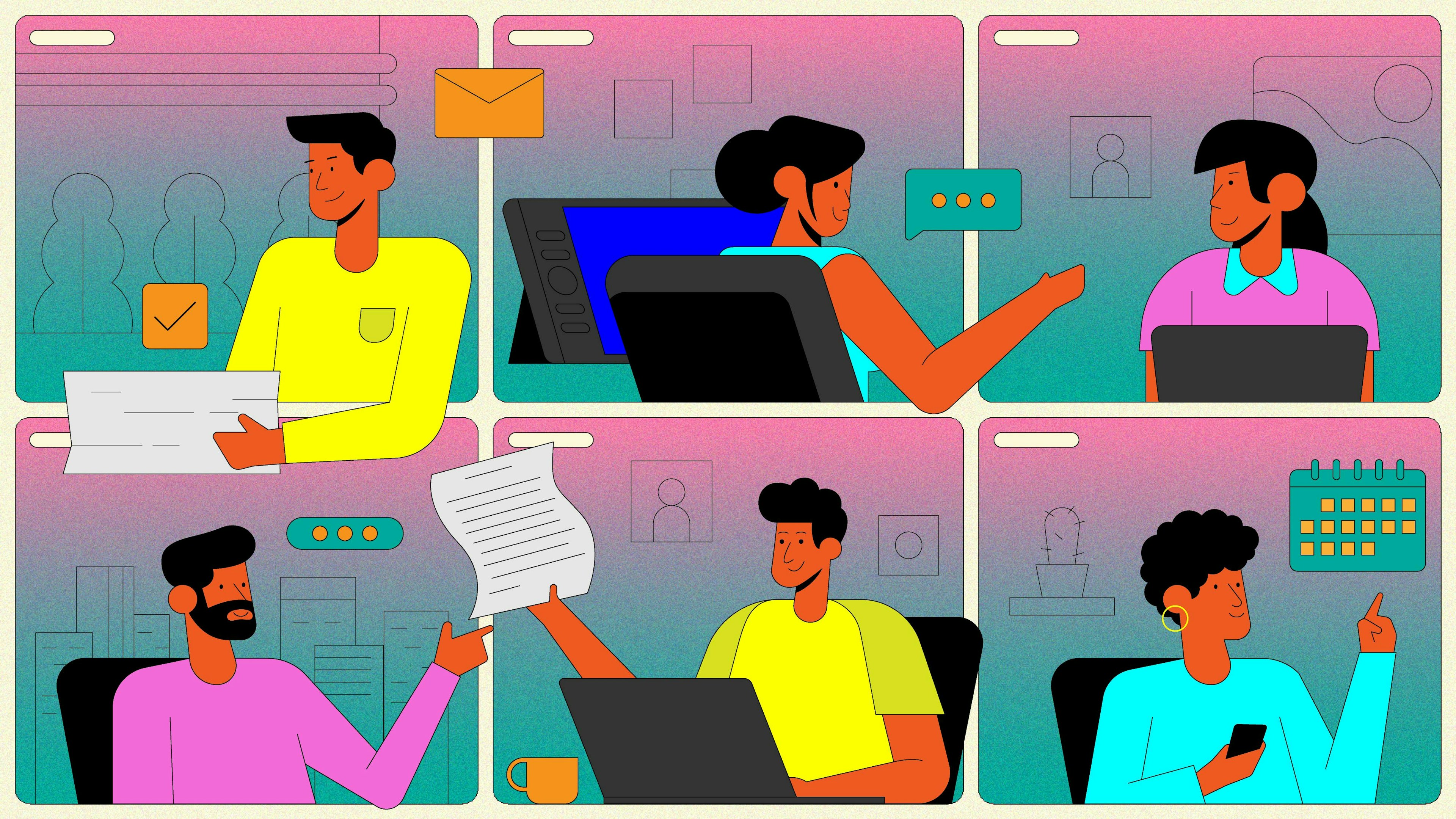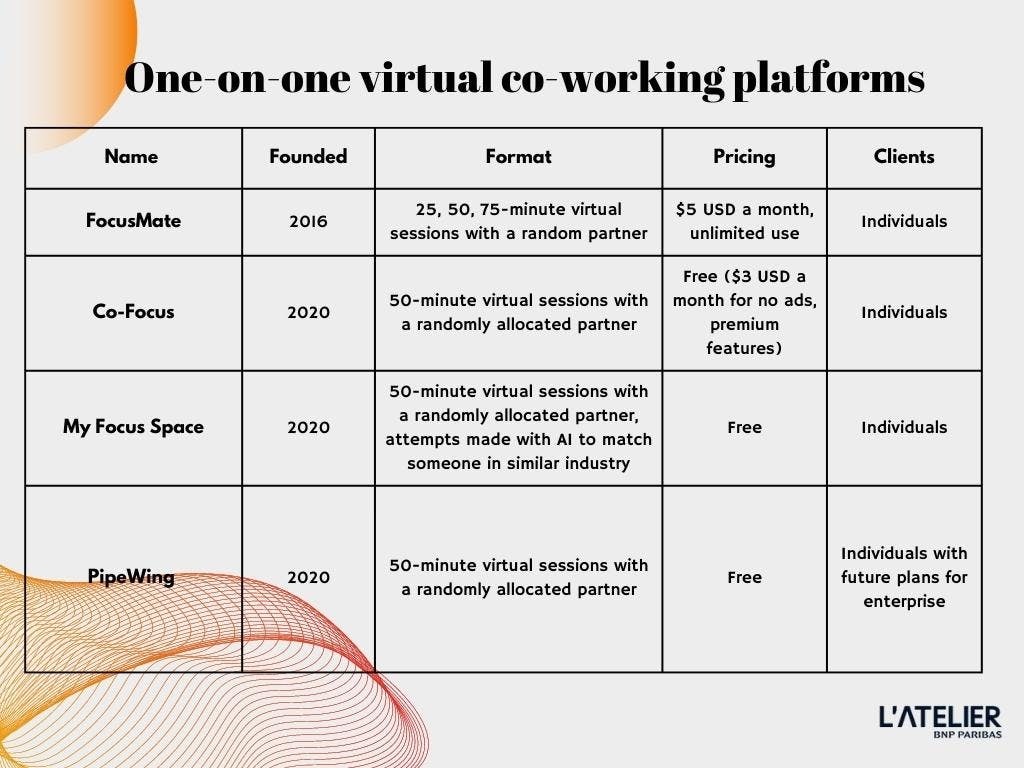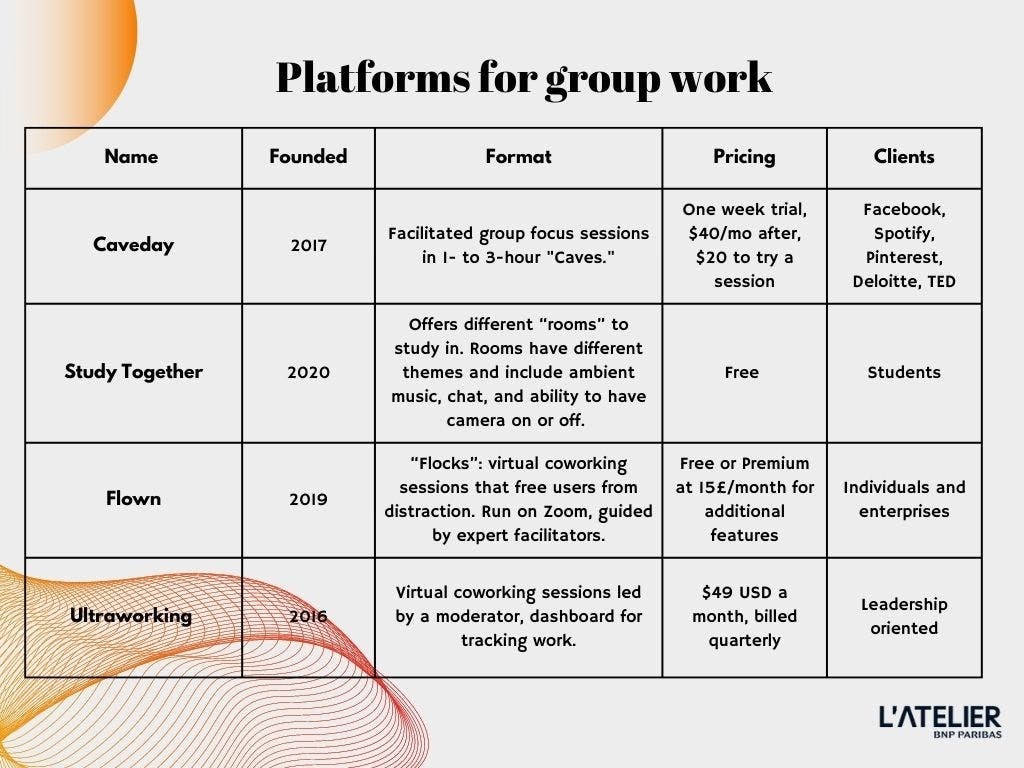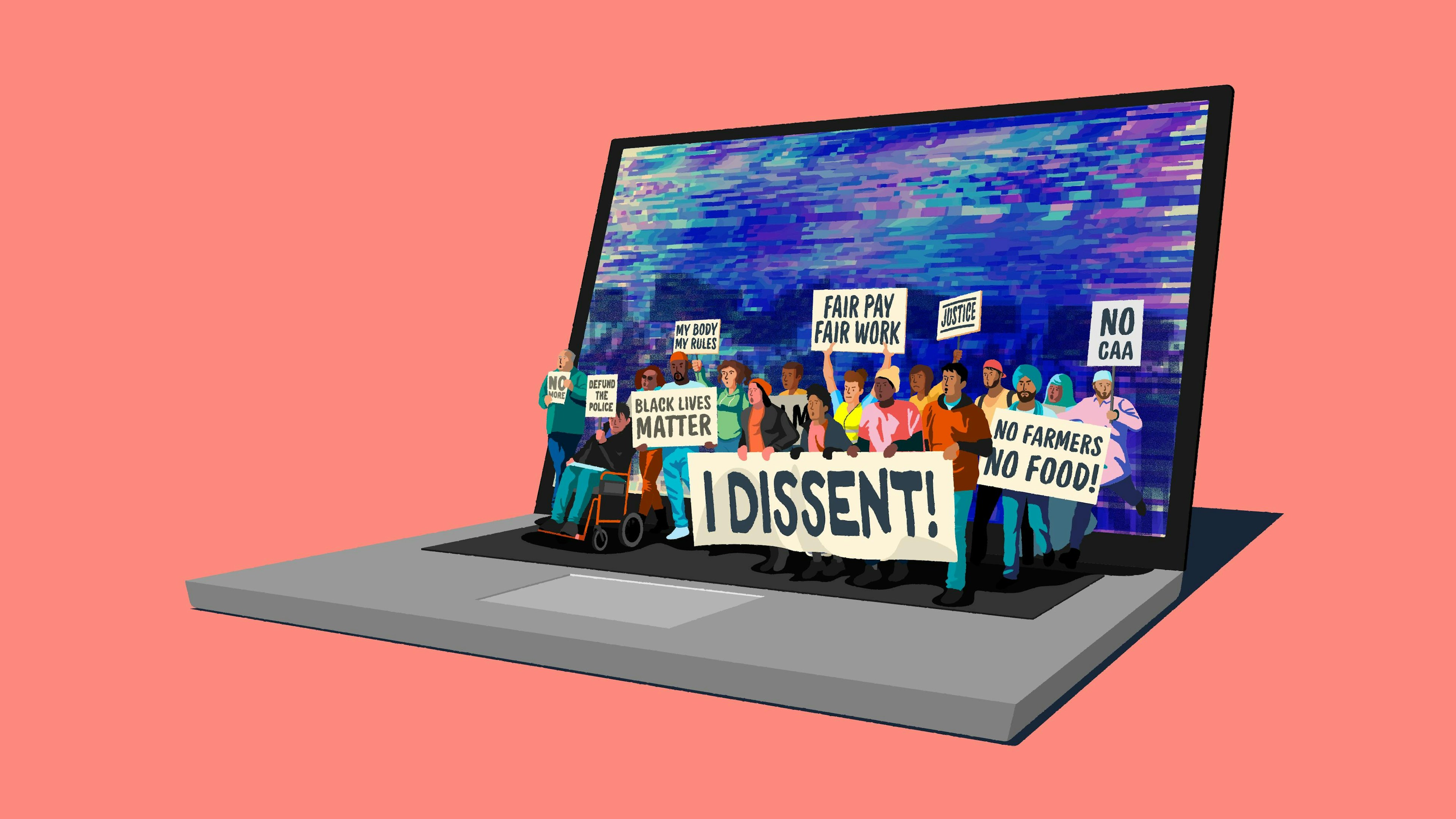Virtual coworking platforms could help us rethink work—if we let them

Reluctant to give up flexible working conditions gained during the pandemic, employees are facing off against leaders who are determined to see them back in offices. The battle over the future of remote work is heated, revealing divisions between workers and leaders.
Last year, Apple employees penned a letter protesting the company’s mandatory back-to-office policy, describing it as both a declaration of mistrust against workers and an undermining of productivity, mental well-being and collaboration. JP Morgan Chase proposed a tracking dashboard to confirm the physical presence of workers in the office, an idea met with enough pushback that CEO Jamie Dimon walked the plans back in a letter to shareholders. Elon Musk sent a scathing letter to Tesla office workers threatening to fire anyone who wasn’t physically in the office for a minimum of 40 hours a week. (Since his purchase of Twitter, and firing of 50 percent of the staff, one project manager posted a photo of herself sleeping at work to meet his deadlines.)
The point of contention appears to be that many leaders don’t believe remote work is capable of replicating the relationships, motivations, and performances of real-world offices.
Is this actually true?
The internet is home to countless digital communities that are bonded, active, and productive. The past two years saw a rise in the popularity of virtual coworking sites, where people work together remotely. Business models vary; some platforms charge subscription fees, while others offer some version of pay-per-use for drop-in users. Formats also vary, with some prioritising one-on-one matching services, and others focused on group sessions. Users tend to be students, or middle-class self-employed professionals.
Many such platforms offer enterprise solutions. Despite differences, the overarching goals remain the same: create community, connection, and motivation while working apart.
Leaders should take note. The popularity of virtual co-working platforms can provide businesses with a playbook on building cohesive teams in a digital environment. There are a multitude of formats and offerings available on the market.
One-on-one accountability: I’ll show you mine if you show me yours
One popular virtual coworking format is composed of one-on-one accountability sessions.
Focusmate offers virtual sessions with a randomly allocated partner, ranging from 25 to 75 minutes. Launched in 2016, the platform provides three free sessions per week. Unlimited monthly sessions cost $5 per month.
In an average session, each person states what they plan to accomplish for the duration of the sprint, posts tasks needed to achieve this goal, and provides updates via chat throughout the allocated time. To wrap up, each partner summarises their progress, celebrates success, and signs off. Cameras are encouraged to stay on.

Group Work
Group sessions offer more flexible formats. CaveDay (founded in 2017) offers facilitated group focus sessions (known as “caves”) that can last from one to three hours. Groups range from 15-100 people, but start with a breakout room, where participants gather in groups of two to three to share what they plan to work on. Caves are moderated by facilitators, who act as timekeepers and host end-of-session conversations. CaveDay costs $40 monthly, or $20 to drop in on a 3-hour session.
Flown, founded in 2019, also uses moderators, and services that include 10-minute guided meditations, the “Almanac” (five-minute reads to refresh), and Academy, where they teach users about the benefits of deep work. Meanwhile, Study Together recreates a library feeling, offering students “rooms” to study in. Rooms have various themes (like library or coffee shop) and include ambient music, chat functionality, and the ability to turn your camera on and off.

Market Analysis
Virtual Coworking isn’t new, but Covid-19 and its aftermath have signalled the need for remote work options.
Physical coworking spaces turned to virtual offerings for members during pandemic confinements, enabling them to keep businesses afloat. Other entrepreneurs, drawn to the ease of scale, low overhead costs, and ability to target a global remote audience, entered the market with virtual-only platforms between 2020 and 2021.
For customers, virtual coworking is a cheaper alternative than a physical coworking spaces, and it offers increased flexibility. A person can participate in two productivity sprints and work the rest of the day in isolation, without worrying about commuting or physically relocating.
The psychological reasons behind joining these digital spaces mirror the reasons for joining an in-real-life (IRL) coworking space.
1. Social Interaction & Accountability
One major drawback of remote work is feeling disconnected from others. The pandemic increased feelings of isolation and loneliness; people could no longer socialise at work, gyms, and coffee shops. Virtual coworking alleviates these symptoms by creating opportunities for users to meet new people and discuss their work.
“It stops me from feeling lonely. People are friendly and seem to genuinely care that you got your work done,” a reddit user told the r/ADHD community. “They share their self-doubt sometimes and it helps everyone have less harsh expectations of themselves. You start seeing the same faces which makes you feel a part of a community.”
The presence of others helps with accountability. Known as the Hawthorne Effect, researchers observed that our performance improves when other people are watching us. As one user described it, “What's great about this is that it is basically a socially enforced cultural norm—your partner expects you to do it, and you expect your partner to do it—hello, executive function!”
Many platforms have a camera-on rule—meaning if you drift off-piste, partners are aware.
2. Novelty and Time Constraints
Virtual coworking sprints use time constraints and novelty to increase engagement. Research shows that novelty increases dopamine and overall enjoyment of tasks. For some users, the thrill of meeting a new person fills that need, making the session more compelling. “Every session starts with some new-person/social energy,” explained one user. “In my normal work life, I’m often silo-ed off without much social interaction. While interactions last for about 2 and a half minutes of the total 50 minute work session, I find it gives me a bolt of energy to meet someone new each time I start a new round.”
Time constraints also help. Our capacity to focus on high cognitive tasks is limited. Working with dedicated focus helps sharpen attention, and time limits add a level of intensity that prevent distraction.
Community & Connection
The social aspects of virtual coworking give members means to expand their network and meet new people, which became a struggle during the pandemic. The average person’s network shrunk by nearly 20 percent, specifically among tertiary connections. Virtual coworking spaces offer a pipeline of new individuals in low-stakes environments. You get a few minutes to introduce yourself before getting to work, so if you don’t get along, or click, you still get the benefit of a conversation-free work sprint and don’t have to see that person again.
In industry-specific working sprints, a focused cohort of peers is a great way to make professional connections. There is something intrinsically human about turning what would otherwise be a solitary pursuit into a way to cultivate community.
Human Centric Technology
The pandemic increased technology use, including more time spent in video chats, answering emails, and being online. Screen-time rose across all demographics. It might be counterintuitive to assume that the solution to this overwhelm is yet another technological tool, but virtual coworking can help address these issues at scale.
Mono-Tasking
Despite the overwhelming body of research that demonstrates humans are terrible at multitasking, the modern workforce demands constant toggling between windows, programs, chats, and tasks. By asking users to spend a limited time focused on one thing, virtual coworking sprints can help eliminate these behaviours and leave users space to concentrate on deep work.
Cycle Alignment
Another positive aspect is the incorporation of sprints, where people often work long stretches in front of their desks without taking breaks. Virtual coworking intentionally forces people to work for a set period of time and then rest, better aligning it with the conditions necessary to produce our best work.
Building Relationships
Platforms that facilitate community and connection are a positive addition as remote work increases in prevalence in the years to come.
Building a Digital-First Organisational Culture
One major behavioural driver of hybrid work is flexibility. Employees want to choose where and how to work in alignment with personal and professional obligations. Virtual coworking adds another layer of flexibility to our time: The capacity to calibrate each working hour to the exact level of social interaction desired. Want to spend an hour with a group? No problem. Or work one-on-one with a fellow industry professional? You can do that.
Implementing some of the aforementioned practices would yield businesses a more cohesive organisational culture. Whether scheduling a sprint for your team, giving everyone a chance to collectively co-work, or opening collaboration beyond the walls of an enterprise, virtual coworking sprints can be invaluable to improving productivity, increasing community, and strengthening bonds.
One can imagine a manager who does a 50-minute sprint with team members once a week to bond, catch up, and ensure alignment on performance. Or a team that chooses moments in a week for coworking together and courting some deep focus. This could be a great addition to the “meeting-free” days that are gaining popularity. Certain businesses could offer optional drop-ins, where people can freely gather and work together, providing a way for people to cross-pollinate with colleagues from other departments or regions.
The involvement of top level leaders can be a powerful mechanism for communicating culture. For example, a CMO could “host” a session once a month, giving workers the chance for virtual face-time with them. Such sessions could be the equivalent of crossing paths in the hallway, with the added psychological benefit of working collectively in pursuit of organisational goals.
For businesses that want to experiment with these benefits...
Don’t overdo it
Sprints are not designed to be done back-to-back, all day long. Leaders who want to implement this solution must be clear about how often people should participate, otherwise sprints become the same type of overwork creating a global rise in burnout. Reddit users, who are members of virtual coworking platforms, admit to doing back-to-back sessions on FocusMate daily, which eventually causes fatigue. Thus the technique loses appeal.
Collaboration vs. Surveillance
One questionable feature of some virtual coworking spaces is the ability to share screens as an extra accountability measure. This can be abused by employers who don’t trust workers. Employees who agree to this type of techno-surveillance may be seen as “more committed” to the organisation, further eroding trust. Without a focus on people-centric collaboration, these technologies can replicate the toxic micro-management practices of physical offices that cost businesses their top talent.
Virtual coworking also differs from offerings geared toward creating “virtual offices,” where workers have avatars that are present in a digital environment, which leans more towards the digital presenteeism part of the spectrum (like Walkabout Collaborative). These platforms often miss the mark, and replicate undesirable behaviours that unintentionally (or intentionally) reward outdated productivity metrics. Notably, they create managers whose jobs mostly revolve around knowing where everyone is at all times.
Privacy & Data Collection
Best practices for data and IP protection when using these types of services are still evolving, especially if users are unclear on whether or not sessions (chat logs/videos) are recorded. Businesses should ensure that workers understand how to keep proprietary information secure, and prevent the revelation of sensitive information.
The current debate around remote work seems to ignore the lessons of online virtual communities and virtual coworking platforms. There are other ways to build collaboration and connection beyond a distracting Slack channel or a boring Zoom cocktail. Businesses should perceive virtual coworking spaces as inspiration for how teams can build rapport, increase cohesion, and focus on deep work.
Virtual coworking provides a compelling balance between needing to be online, all the time, and the disconnect of asynchronous communication. Used intentionally, it can replicate the serendipity of crossing a colleague in the hallway, create opportunities for face-time and cross-pollinated knowledge, and support better performance.
16 Mar 2023
-
Rahaf Harfoush
Header illustration by Debarpan Das.
Get the future in your inbox.
02/03
Related Insights
03/03
L’Atelier is a data intelligence company based in Paris.
We use advanced machine learning and generative AI to identify emerging technologies and analyse their impact on countries, companies, and capital.


